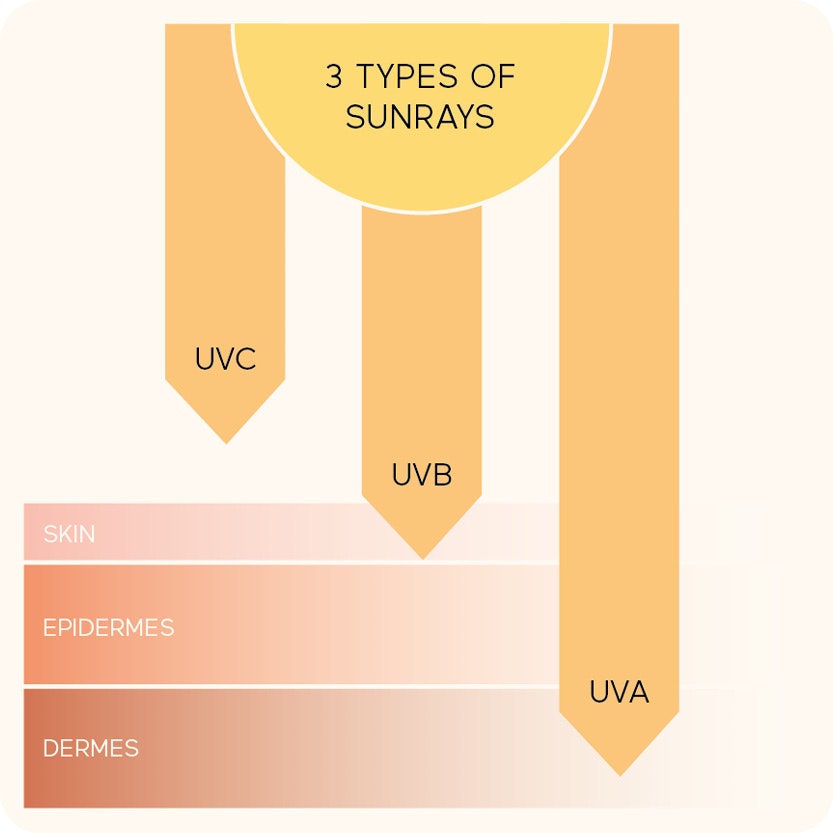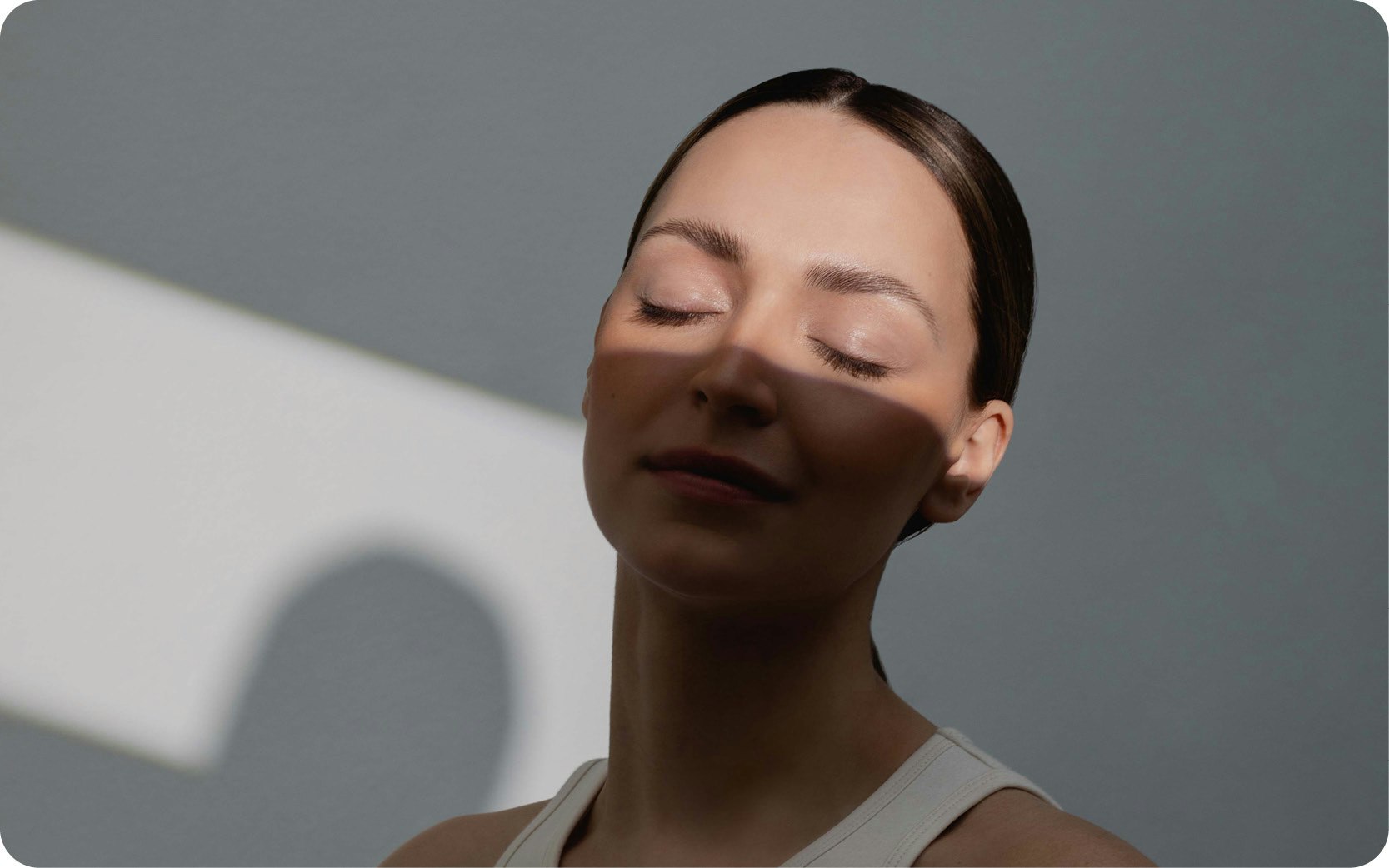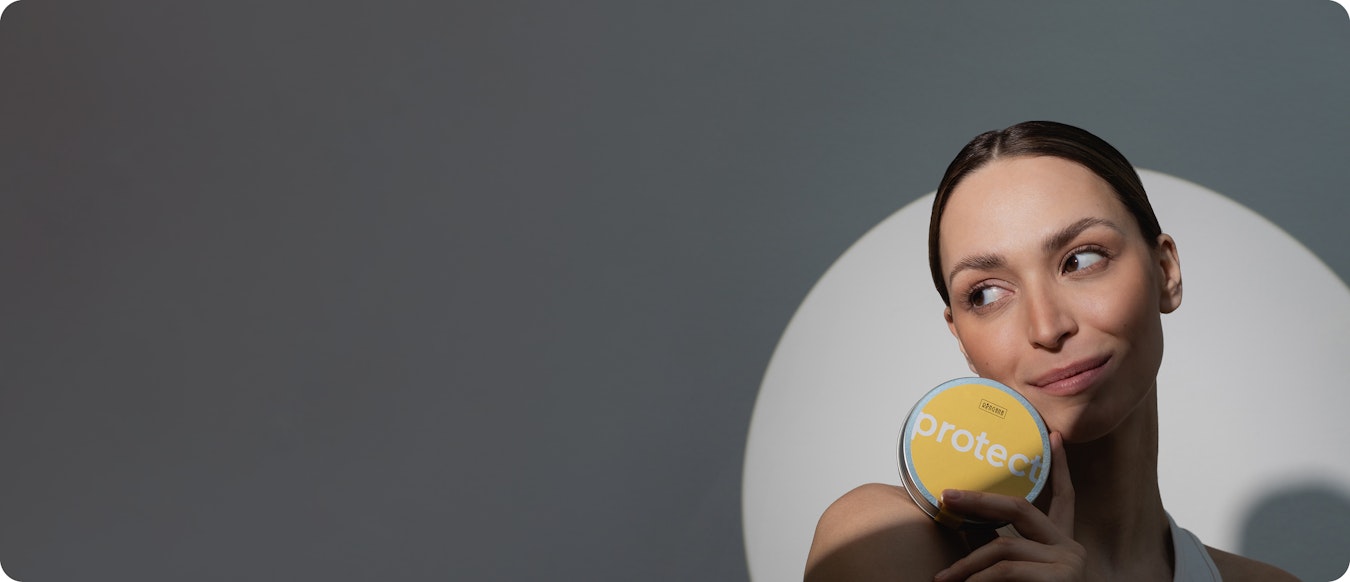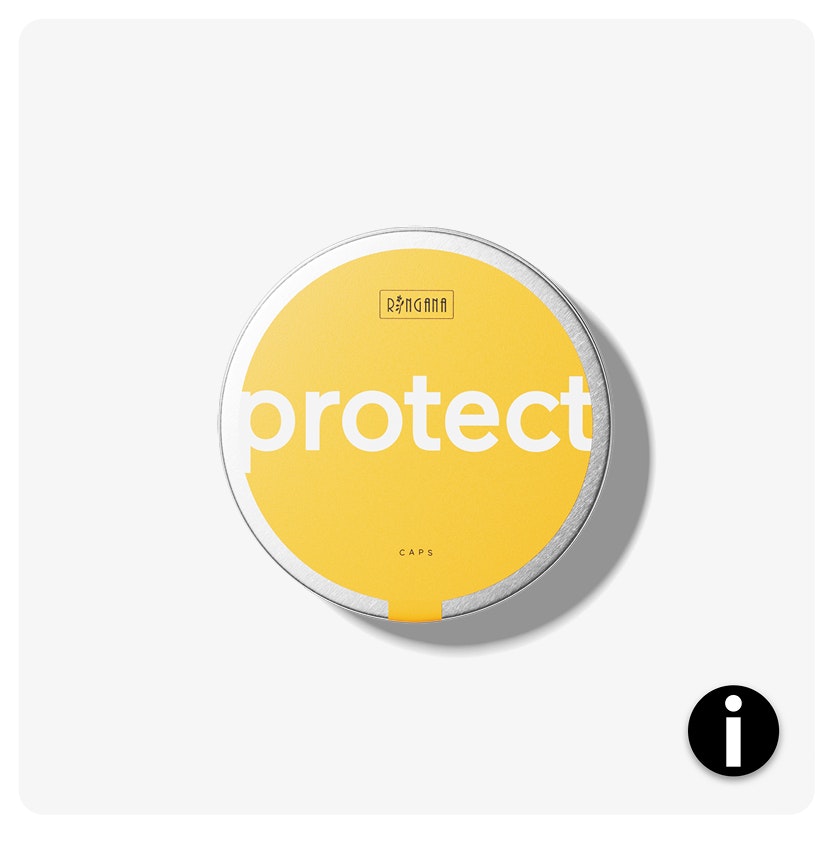We can feel summer approaching, and we’re already starting to plan our first hikes and city trips. We’re also spending more time outdoors – but we often forget to protect ourselves properly from the sun. However, protection from the sun’s rays should be the finishing touch of every beauty and care routine whatever the season. Read on to discover the short-term and long-term damage that the sun can cause, and see how you can protect yourself from harm easily and conveniently, at any time of the year.
UV A B C: types of solar radiation and their impact on the skin
UV stands for “ultraviolet”, and these rays are a natural part of sunlight. Although you can hardly see UV rays with the naked eye, they can really get under your skin. Sun rays are usually broken down into three types of UV: UVA, UVB and UVC – based on their wavelength. This is also what determines the risk they present to the skin: the longer the wavelength, the more dangerous and long-term the potential damage to the skin if we expose ourselves to the sun without protection.
What are the differences between the three types of UV rays?
UVA: UVA rays are long-wave and account for around 95 % of all UV radiation that makes it to the earth’s surface – the time of year makes no difference.
These rays penetrate deep into the middle layer of our skin, promoting the formation of free radicals. This leads to oxidative stress in our cells which causes premature, light-related skin ageing. The long-term effects are visible in the shape of wrinkles and a loss of skin elasticity. This is also referred to as “photo-ageing”. Apart from the signs of skin ageing, UVA and UVB rays can also increase the risk of skin cancer or even trigger it.
UVB: the wavelength of these UVB rays is between 280 and 320 nm, which makes them shorter than UVA rays. The strength of the radiation depends on the season and time of day, as well as on where you are. This radiation hits the outer layer of skin, and can do long-term damage to the cells. The visible effects of UVB rays are tanning, sun-related redness, hyperpigmentation, and sunburn. This means that the skin damage is already caused before the skin reddens, and continually increases if we expose ourselves excessively to the sun without protection.
UVC: these rays are the richest in energy and have the shortest wavelength, and are absorbed by the earth’s atmosphere. As a result, these rays don’t reach the surface of the earth and don’t represent a risk to humans.
How can I protect myself from the sun?
Apart from the standard accessories such as a sunhat, sunglasses, sun cream, etc., CAPS protect provide additional support from the inside against sun-related skin-ageing. Since this protection comes in capsule form, it’s easy and convenient to add it to your daily beauty routine. So this additional protection from within can be turned into a regular part of your daily life – because as we all know, routine works.
What makes CAPS protect special?
CAPS protect capsules are great for shielding us from free radicals that can damage our skin. With antioxidant ingredients such as blood orange extract and green tea extract, they offer natural protection against cell damage caused by oxidative stress, or photo-ageing caused by UV rays. Thanks to further smart combinations of copper with its anti-blue light effect and zeaxanthin from a tagetes flower (marigold) extract to protect against digital ageing, you get an extra line of defence against light-related negative impacts – regardless of the time of year.
A note of warning: if you’re taking CAPS protect, please do remember that the capsules don’t contain any sun protection factor as such, so you should also ensure that you always use external sun protection products such as FRESH sunscreen face and FRESH sunscreen as well.



 Zur Übersicht
Zur Übersicht